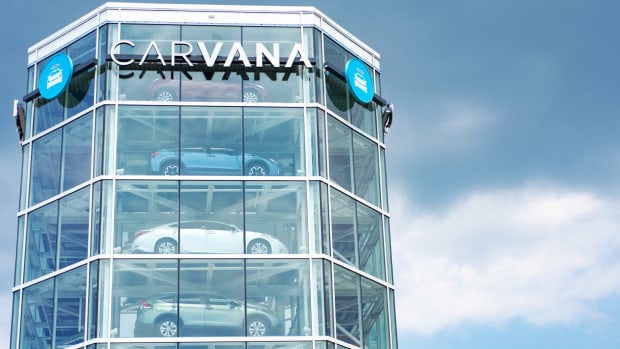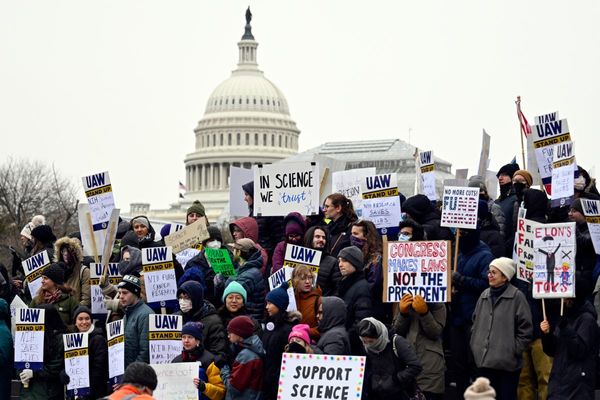
After a dream start to the stock-market year, Carvana came back to Earth.
The online used-car seller's stock had rebounded spectacularly this year -- until the report of fourth-quarter and full-year results on Feb. 23. Carvana's share price more than doubled (up 113%) to $10.08 from Dec. 30 when it ended the year at $4.74.
The most disconcerting issue is that nothing justified this improvement. That's because the fundamentals hadn't changed and the Tempe, Ariz., group had made no announcement.
Observers explain that Carvana (CVNA), which is struggling under significant debt, had become a meme stock. Meme stocks are defended by retail investors on social media because they are attacked by short-sellers, investors who bet that these stocks' prices will drop.
'It Was Clearly a Very Difficult Year': Carvana
But reality soon caught up with the company.
"2022 was a unique year for Carvana," the firm said on Feb. 23 in the earnings release. "From a short-term perspective, it was clearly a very difficult year. After eight consecutive years of annual improvement, it was the first year we stepped back on the key metrics."
It continued: "This begs a series of questions: What happened in 2022? What are we doing about it? Where are we going in the near term? What does all this mean for the long-term prospects of the business?"
The numbers are awful: In the fourth quarter, sales fell 23% and revenue was down 24.4%. The company lost about $7,400 on each unit it sold, and Carvana's gross profit per vehicle fell to $2,219, less than half what it was in the year-earlier period.
The firm burned $1.8 billion in cash and had just $434 million cash on hand at the end of 2022. Its debt amounts to $7 billion including leases.
Another figure is noteworthy: For last year Carvana posted a net loss of $1.59 billion, more than the $610 million cumulative losses from 2014 to 2021. During this period, the largest annual loss Carvana recorded was $171 million for 2020.

These figures reflect a reversal of the situation for the company, which had surfed on soaring used-vehicle prices caused by both the covid-19 pandemic and the disruptions to the supply chains of car manufacturers.
Carvana had notably bought many cars in hopes of reselling them at much higher prices. But conditions in the car market normalized, and the Federal Reserve sharply raised interest rates, hammering the used-car market.
Financing car loans became expensive, and at the same time, consumers, attracted by competitive prices offered by car manufacturers, preferred to buy new vehicles. Taken together, these left Carvana with large inventories of used vehicles.
No Plans to Raise New Funds
"One, we came into the year positioned for growth, similar to what we had experienced in the prior nine years," Chairman and CEO Ernie Garcia III told analysts during the earnings call on Feb. 23. "Two, after the pandemic snarled the automotive supply chains and historically rapidly rising interest rates combined to dramatically impact the affordability of used cars."
"Three, rising interest rates and market sentiment drove a significant shift in our priorities away from growth and toward profitability. Four, this combined to lead to markedly lower volumes than we had positioned for, and as a result, we've been carrying excess costs."
During this call, Garcia did not utter the word "bankruptcy," even though many experts believe that this is the elephant in the room.
Garcia said the company is doing everything to reduce losses and costs and will also buy fewer cars to match the slowdown in sales. Its model is based on the idea that must sell more used vehicles than it buys.
The car-vending-machine company plans to cut costs by about $100 million a year this year.
The boss ruled out a capital raise for now, explaining that Carvana had "a lot of options," such as selling its real estate assets.
"Our plan is to not need to raise additional capital," Garcia said. "But obviously, we'll be paying attention. We'll do what we need to do that's right for the business. I think we have access to capital in many forms. We've obviously got a lot of real estate that's very high quality. We have approximately $2 billion of real estate."
"The majority of that is inspection centers, which are high-quality financeable properties. We've got a lot of other assets as well, and we've got capacity to put in more secured debt. We've got capacity to put in more unsecured debt. Obviously, in the future, we chose to -- and we believe it was the right choice, we could raise equity."
In addition to the $434 million in cash, the firm also has approximately $1.5 billion in committed facilities. But the horizon doesn't seem to clear up.
"We are planning more conservatively in the near term than we have in past years and, therefore, expect the positive seasonality we usually see late in the first quarter and in the second quarter to be more muted this year than in prior years," Carvana warned.







